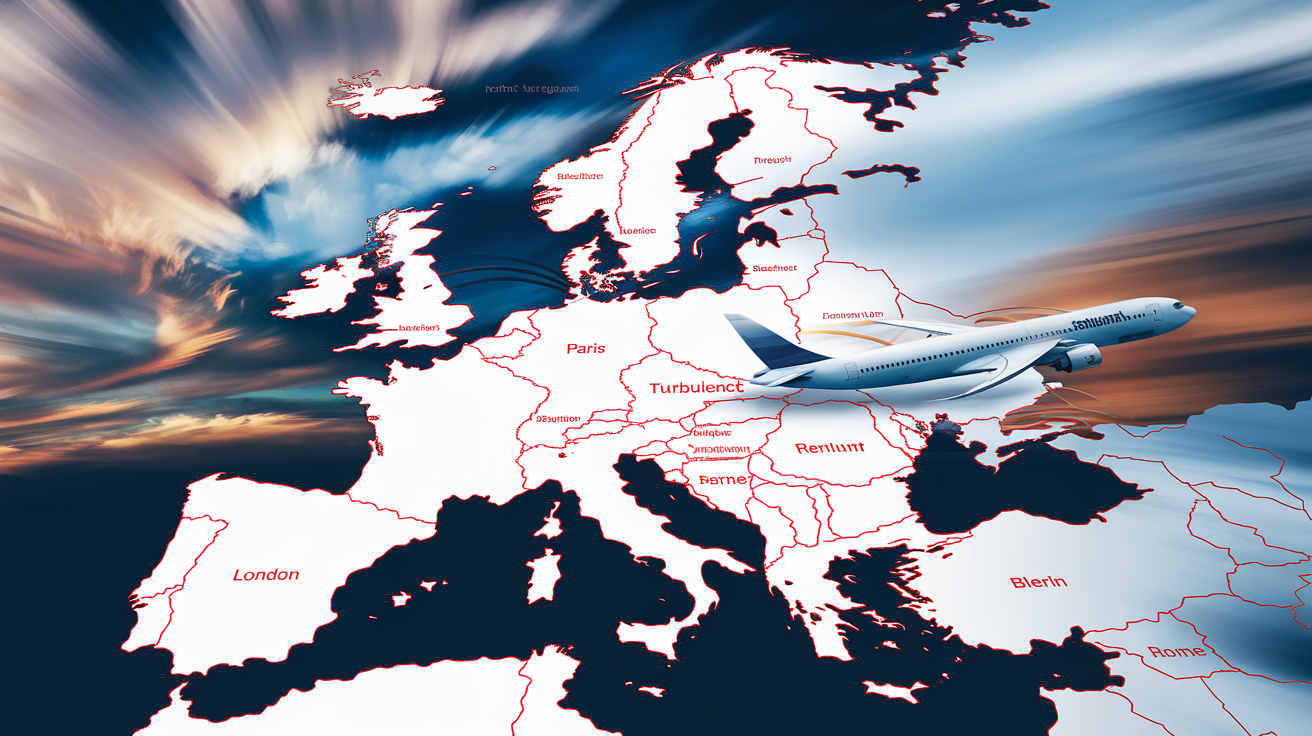A study conducted by the Turblia specialist in turbulence monitoring, reveals the European air routes most prone to turbulence. Of the ten most turbulent routes, eight involve flights passing over or around the Alpsparticularly in Switzerland. Routes involving departures from French airports are also featured. The site frequently analyzes global forecasts, to offer an interactive map anticipating future turbulence, and compiles monthly and annual statistics highlighting air turbulence hotspots.
In the world of aviation, there's nothing quite like the sensation of flying. However, this experience can sometimes be disrupted by turbulencethese unexpected jolts that cause the aircraft to vibrate uncontrollably. In Europe, some itineraries are notoriously prone to these atmospheric phenomena. Turbli, a company specializing in turbulence monitoring, recently shared a study highlighting the effects of turbulence on the environment. European routes most affected by this phenomenon.
The problem of turbulence over the Alps
Across Europe, the Alps stand like an imposing barrier, influencing air routes that fly over or around them. Unstable weather conditions and shifting winds make this area, particularly in Switzerland, prone to frequent turbulence. Of the ten most affected routes, a surprising eight cross or terminate in this country, underlining the impact of the Swiss mountains on European aviation.
Air routes most affected
Turbli's exhaustive analysis revealed that among the five of the most turbulent routesMany of them begin or end in France. Nice, Zurich and Venice are three of the international airports particularly affected. This is partly due to the complex interactions between the various weather fronts originating in the Atlantic and those generated by the European land masses.
The role of technology in turbulence prediction
Thanks to advanced tools, such as the tracking of variations in flight times in relation to the scheduled time, the airlines and their passengers can better anticipate in-flight disturbances. Turbli, in collaboration with NOAA and the UK Met Office, forecasts possible turbulence for the next twelve hours, offering a valuable opportunity to minimize discomfort and adapt routes where possible.
Tips for regular passengers
For aircraft regularly using high-risk trajectoriesIn addition, airlines encourage passengers to fasten their seatbelts throughout the flight. Emiratesfor example, emphasizes this in its safety videos to ensure the peace and safety of its passengers. Furthermore, understanding in advance which routes may be disrupted prepares travelers mentally and thus enhances their flight experience.
Impact of disruptions on the airline industry
The repercussions of turbulence are not limited to the fleeting experience. They also affect logistics operations airlines. With recurring challenges, some companies have had to deal with frequent cancellations, compromising their reliability and reputation on the global market.

Comparison of Turbulent European Air Routes
| Route | Turbulence frequency | Special features |
| Switzerland - Italy | High | Passage over the Alps |
| France - Spain | Average | Peri-alpine zone |
| Switzerland - Austria | High | Influence of the Mistral |
| France - Switzerland | High | Variable weather conditions |
| Germany - Italy | Average | Changing altitude currents |
| Switzerland - France | High | Orographic effects |
| Italy - Austria | High | Mountainous terrain |
| France - Italy | Average | North wind |
| Switzerland - Germany | Average | Border interactions |
| Austria - France | High | Catabatic wind |




